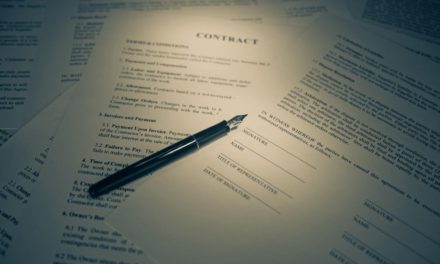A purchase order (PO) refers to a legally binding agreement between a buyer and a seller. A purchase order details the products, services, or merchandise the buyer agrees to buy at a certain price. It also details the delivery date and the terms of payment for the buyer. The emergence of purchase order software has helped streamline procurement processes, allowing better invoice and inventory tracking.
Purpose of a Purchase Order
Purchase orders are used when a buyer wants to buy products and goods on account. That means the vendor or supplier delivers the purchased items before payment, with the PO serving as risk protection. Alongside their legal protection, POs are considered significant in inventory management and payment tracking.
The purchase order allows suppliers to track when payments are made for specific products and services. Buyers hold copies of items and products they plan to purchase and have a tracking capability that promotes trust, accountability, and transparency between the parties.
Why are Purchase Orders Used?
When most businesses start, they ignore and downplay the significance of a PO process in favor of a more informal approach. But as companies grow and their purchase processes become complex, the legacy, the archaic, cash-for-goods system can cause confusion and loss of money.
Here are the most common reasons companies use a purchase order:
Legal protection
Let’s say that your company ordered ten computers, paid for them, but on delivery, only eight were received. Who’s to blame? If you and your supplier disagree and you don’t have a legally binding document, you can end up in a legally compromising situation. Without a readily available paper trail, it’s difficult to prove what went wrong and who’s to blame.
Purchase orders transcend this ambiguity by bringing two parties together in a mutually binding agreement. The PO serves as “on-the-record” legal documentation. Once the supplier receives and approves the purchase order, the two of you are legally bound to the deal.
Note that simply sending a PO to the vendor isn’t sufficient to be legally binding or contractual. The document becomes legally binding when the vendor acknowledges the PO by signing it.
Tracking
Purchase orders help you account for all the services and goods your company ordered. Purchase orders keep tabs on how you’re paying for ordered goods and track them when they’re arriving. In the same way that identification numbers help track people, by assigning a PO number to purchase, you can track its trajectory.
Auditing
If your company is audited, you will thank yourself for having a PO in place. By providing auditors with accurate records and documentation of packing slips and invoices, purchase orders eliminate stress from the auditing process. Without clearly documented POs, expect a long and painful exercise of poring over receipts, invoices, and emails with suppliers.
Supplier-vendor relationships
If your vendor is used to operating with POs, you’ll get your supplies faster if you send one. The purchasing process is straightforward if you have everything your supplier needs to know in one place. So, with a well-documented list of purchase orders, there will be no miscommunication or back and forth processes.
How Does a Purchase Order Work?
The steps involved in the purchase order can be complicated. Below is a breakdown of a typical transaction involving a purchase order from the purchaser’s perspective:
- First, the management informs the purchasing department of an upcoming purchase. Some organizations do this by issuing a purchase requisition form.
- If the purchasing department approves the order, they fill out a PO form detailing the purchase.
- The purchase order is then sent to a vendor who decides whether or not they can fulfill the order. Once they approve the purchase, it becomes a legally binding document.
- The buyer issues payment for the agreed price (or pays at an agreed later date) which is documented.
- The supplier delivers the products alongside the invoice. The purchaser’s finance department then matches this invoice with the initial purchase order to ensure conformity.
- If the purchase order, the goods receipt note, and the supplier’s invoice match, the purchasing department issues the payment.
- If they don’t match, the purchasing department doesn’t issue the payment but makes serious follow-ups to determine loopholes in the procurement process.
Purchase orders are standardized across organizations and companies. They contain information about the vendor and buyer (addresses, names), payment terms (a form of payment, due date, credit, bank transfer), and the order itself (product, order specs, quality, quantity, and price).
Benefits of a Purchase Order System
If carefully planned and efficiently implemented, a purchase order system can provide you with the following benefits:
- Help you avoid duplicate orders by helping you track orders accurately and efficiently.
- Purchase orders are required on some special financial audits. So, a purchase order system helps to secure your purchase documentation from top to bottom.
- Help you avoid surprise price increases by helping you assess current prices and match them with your intended budget.
- Help you keep track of upcoming orders by setting notifications.
- Purchase order systems help you keep invoices in check, thus leading to structured and streamlined ordering and delivery processes.
- Purchase order ensures clear communication by clarifying objectives and setting priorities about purchases, payment, and deliveries.
ProcurePort – Masters in Automated Procurement Solutions
Today, companies are shifting towards electronic procurement systems to scale their procurement planning and management processes. For instance, trusted vendors like ProcurePort are offering software solutions that make any sophisticated procurement process a breeze. With ProcurePort’s procurement solution, you get to analyze your spending, simplify your purchases, and focus on mission-critical business operations. You don’t have to sit for long hours processing orders, tracking payments, or preparing compliance documentation.
Contact ProcurePort, the undisputed master in automated procurement solutions.
Understanding about RFQ Software with the help of our new website!










